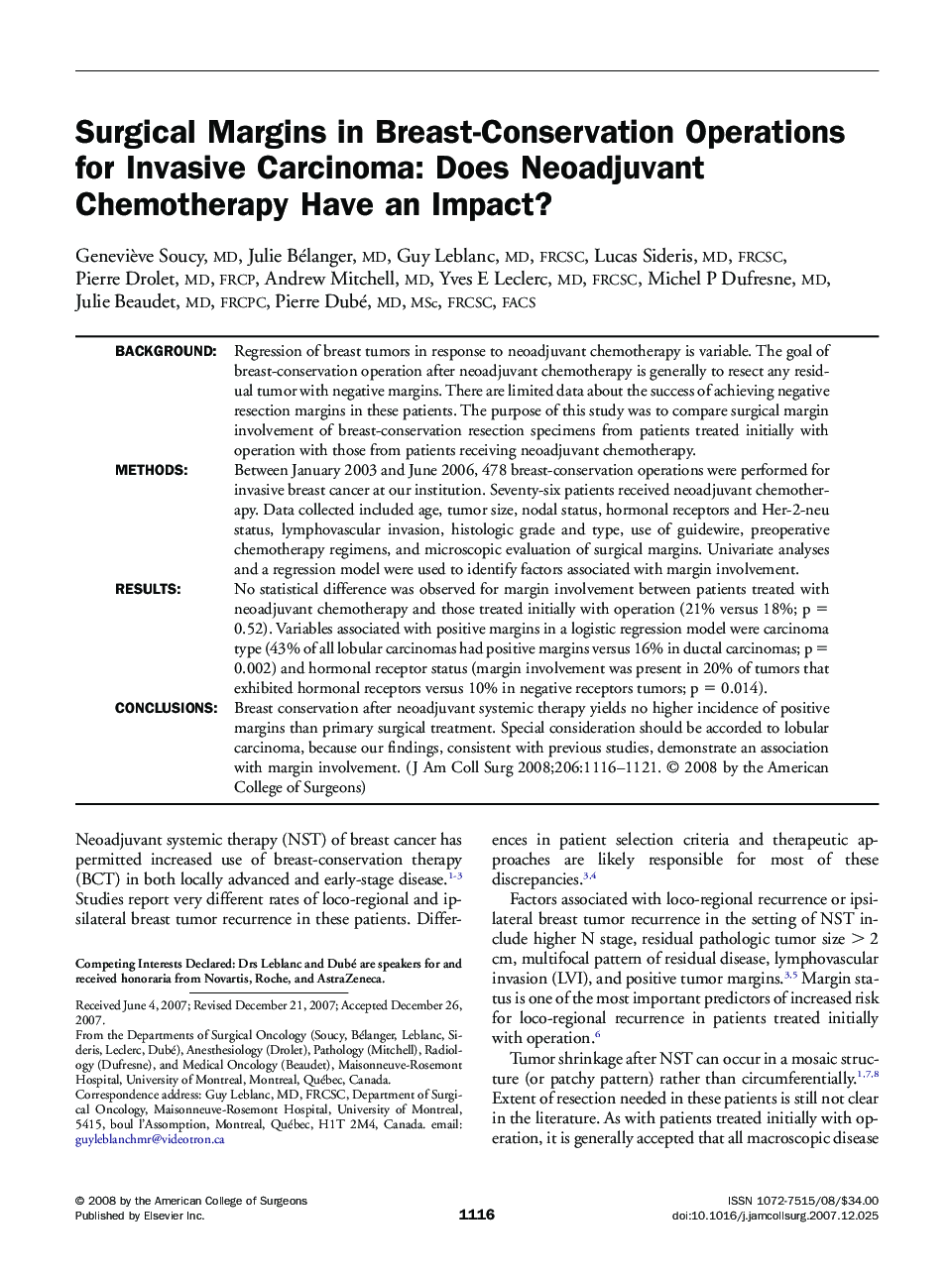| Article ID | Journal | Published Year | Pages | File Type |
|---|---|---|---|---|
| 4295747 | Journal of the American College of Surgeons | 2008 | 6 Pages |
BackgroundRegression of breast tumors in response to neoadjuvant chemotherapy is variable. The goal of breast-conservation operation after neoadjuvant chemotherapy is generally to resect any residual tumor with negative margins. There are limited data about the success of achieving negative resection margins in these patients. The purpose of this study was to compare surgical margin involvement of breast-conservation resection specimens from patients treated initially with operation with those from patients receiving neoadjuvant chemotherapy.MethodsBetween January 2003 and June 2006, 478 breast-conservation operations were performed for invasive breast cancer at our institution. Seventy-six patients received neoadjuvant chemotherapy. Data collected included age, tumor size, nodal status, hormonal receptors and Her-2-neu status, lymphovascular invasion, histologic grade and type, use of guidewire, preoperative chemotherapy regimens, and microscopic evaluation of surgical margins. Univariate analyses and a regression model were used to identify factors associated with margin involvement.ResultsNo statistical difference was observed for margin involvement between patients treated with neoadjuvant chemotherapy and those treated initially with operation (21% versus 18%; p = 0.52). Variables associated with positive margins in a logistic regression model were carcinoma type (43% of all lobular carcinomas had positive margins versus 16% in ductal carcinomas; p = 0.002) and hormonal receptor status (margin involvement was present in 20% of tumors that exhibited hormonal receptors versus 10% in negative receptors tumors; p = 0.014).ConclusionsBreast conservation after neoadjuvant systemic therapy yields no higher incidence of positive margins than primary surgical treatment. Special consideration should be accorded to lobular carcinoma, because our findings, consistent with previous studies, demonstrate an association with margin involvement.
